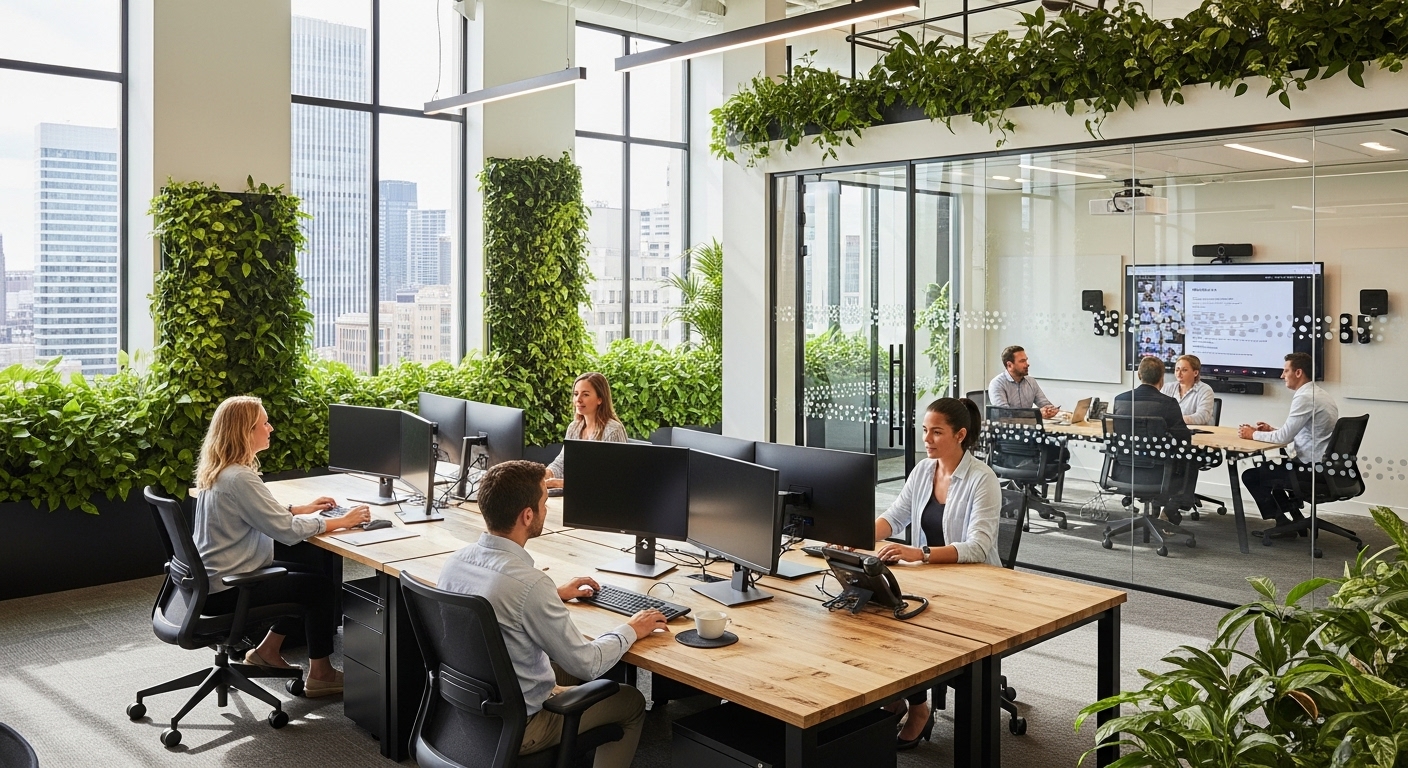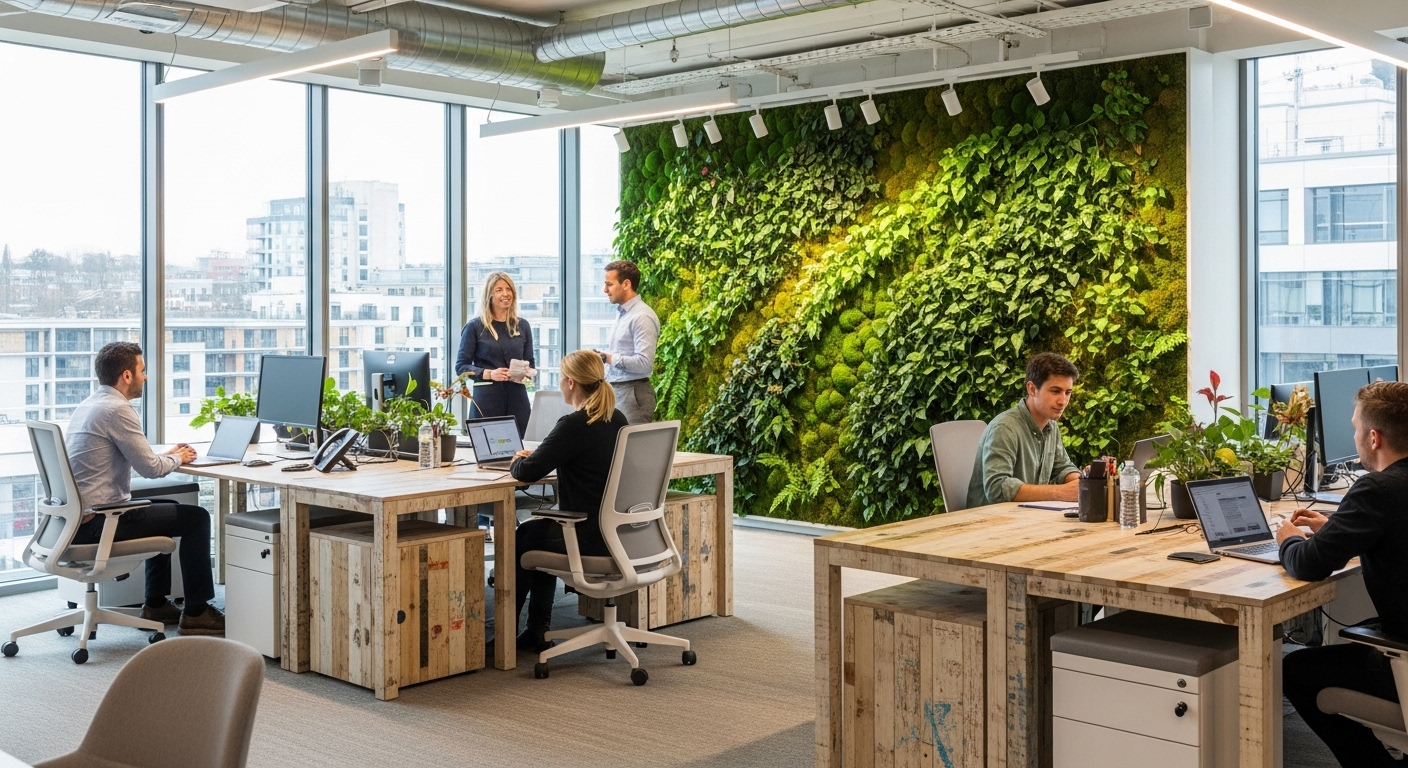The concept of a ‘sustainable workspace’ is undergoing a profound transformation. Once limited to energy-efficient light bulbs and a few recycling bins, it has evolved into a cornerstone of modern business strategy and a critical component in the future of work. Today, leading organizations understand that a truly sustainable environment is not just about reducing its ecological footprint; it’s a holistic ecosystem designed to enhance human well-being, drive operational efficiency, and deliver a powerful return on investment. This triple-win approach—benefiting people, the planet, and profit—is reshaping how we design, build, and operate the spaces where we work. As companies compete for top talent and navigate the demands of a more conscious generation, creating workspaces that are healthy, intelligent, and regenerative is no longer a niche trend but a competitive imperative. This article explores the multi-faceted benefits of this integrated approach, from boosting cognitive function to building a resilient financial future.
Beyond energy savings: redefining the modern sustainable workspace
For years, the conversation around sustainable offices was anchored in tangible, planet-focused metrics: kilowatt-hours saved, gallons of water conserved, and tons of waste diverted from landfills. While these elements remain critical, the modern definition of a sustainable workspace has expanded to embrace a much richer, human-centric philosophy. The new paradigm views the workplace as a living ecosystem where environmental responsibility and human well-being are inextricably linked. It’s a shift from a ‘do less harm’ mindset to one that actively seeks to ‘do more good’—for both the planet and its occupants. This evolution means looking beyond LEED certifications to consider the entire lifecycle of the workspace. It incorporates principles of the circular economy, which prioritizes materials that can be reused, repaired, or repurposed, fundamentally designing waste out of the system from the very beginning. Furthermore, this redefinition places immense value on the health of the employees. It acknowledges that factors like indoor air quality, access to natural light, and biophilic design (our innate connection to nature) are not just amenities but essential drivers of performance and satisfaction. This holistic view understands that a building that is good for the environment should also be good for the people who bring it to life every day.
The human-centric return: boosting well-being and productivity
Investing in a sustainable workspace is a direct investment in your most valuable asset: your people. The tangible benefits for employee health and performance are well-documented and compelling. Green-certified buildings, which often feature advanced ventilation and filtration systems, create a healthier indoor environment. Research has shown that employees in these spaces experience fewer instances of sickness and absenteeism. A landmark study from the Harvard T.H. Chan School of Public Health highlighted the dramatic cognitive benefits.
Employees in green building conditions with enhanced ventilation showed a 26% higher cognitive function score compared to those in standard buildings.
This boost in brain function directly translates to better decision-making, improved strategic thinking, and higher levels of innovation. The integration of nature, or biophilic design, is another critical factor. Access to natural light, views of greenery, and the presence of indoor plants have been proven to reduce stress, improve mood, and increase focus. Employees with views of nature have consistently been shown to be more productive and satisfied with their jobs. It’s not just about feeling good; it’s about performing better. By prioritizing clean air, natural light, and a connection to the outdoors, sustainable workspaces create the optimal conditions for employees to thrive, collaborate, and do their best work, making it a powerful tool for talent attraction and retention.
The circular blueprint: designing out waste from day one
A truly forward-thinking sustainable workspace embraces the principles of the circular economy, a model that fundamentally challenges the traditional linear ‘take-make-dispose’ approach. Instead of focusing solely on recycling at the end of a product’s life, a circular strategy aims to eliminate waste and pollution from the outset. In workplace design, this translates to prioritizing materials that are recycled, renewable, and, crucially, designed for disassembly. This means selecting modular furniture, flooring, and wall systems that can be easily taken apart, repaired, reconfigured, or repurposed as the company’s needs evolve, dramatically extending their lifespan and preventing them from ending up in a landfill. Another key aspect is the shift towards ‘product as a service’ models. Instead of purchasing items like furniture or lighting outright, companies can lease them. This incentivizes manufacturers to create durable, high-quality products that are built to last and can be taken back for refurbishment and reuse at the end of the contract. This not only reduces waste but also transforms a capital expenditure into a more flexible operating expense. Embracing a circular blueprint requires a conscious effort to select suppliers and partners who share this vision, creating a supply chain that values durability, repairability, and resourcefulness over disposability.
The economic advantage: quantifying the ROI of green design
While the benefits for people and the planet are profound, the business case for sustainable workspaces is equally compelling. The perception of green design as a costly luxury has been replaced by the data-driven reality of it being a sound financial investment. Green-certified buildings consistently outperform their non-certified counterparts in market value. They often command higher rental premiums and maintain lower vacancy rates, reflecting a clear demand from forward-thinking tenants. The operational savings are significant and immediate. Features like energy-efficient HVAC systems, LED lighting with smart controls, and water-conserving fixtures lead to substantially lower utility bills over the building’s lifespan. These savings directly impact the bottom line, freeing up capital for other strategic investments. Moreover, the positive impact on employee productivity and well-being creates its own economic return. Lower rates of absenteeism and higher employee retention reduce costs associated with sick leave and recruitment. A more productive, focused, and innovative workforce is the engine of any successful business, and a sustainable workspace is the ideal environment to fuel that engine. When all factors are considered—from operational savings and increased asset value to enhanced human capital—the return on investment for sustainable design is not just positive, but exponential.
Tech as the accelerator: the role of smart technology
Technology is a critical enabler of the modern sustainable workspace, providing the intelligence needed to optimize resource consumption and enhance the occupant experience. Smart building technology, powered by the Internet of Things (IoT), creates a digital nervous system that monitors and manages the workplace environment in real-time. IoT sensors can track occupancy levels, automatically adjusting lighting and climate control to conserve energy in unused areas. This data-driven approach ensures that resources are used efficiently without sacrificing comfort. Smart systems can also monitor indoor air quality, measuring levels of CO2 and VOCs (volatile organic compounds) and adjusting ventilation accordingly to maintain a healthy and productive atmosphere. This technology empowers facility managers with actionable insights, allowing them to move from reactive maintenance to proactive optimization. For employees, this technology translates into a more personalized and responsive environment. They can use mobile apps to adjust their personal workspace lighting and temperature or find and book available collaboration zones, reducing friction and improving their daily experience. By integrating smart technology, organizations can amplify their sustainability efforts, turning their physical space into an intelligent, adaptable, and resource-efficient partner in achieving their business goals.
Cultivating a green culture: empowering employees as partners
The physical infrastructure of a sustainable workspace is only one part of the equation. To unlock its full potential, organizations must cultivate a corresponding culture of sustainability, empowering employees to become active partners in the mission. A state-of-the-art building can have its benefits negated if user behavior doesn’t align with its goals. This requires clear communication, education, and engagement. Initiatives can range from comprehensive guides on waste sorting and composting to workshops on energy conservation. Setting up ‘Green Teams’ or sustainability committees can foster a sense of ownership and provide a platform for employees to contribute their own ideas for improvement. Gamification and friendly competitions between departments can also be effective tools to encourage participation in recycling or energy-saving challenges. The goal is to embed sustainable thinking into the daily routines and decision-making processes of every employee. When people understand the ‘why’ behind the building’s features and are given the tools and encouragement to participate, they develop a deeper connection to their workplace and its values. This shared sense of purpose not only enhances the effectiveness of the sustainability program but also strengthens company culture, builds community, and reinforces the organization’s commitment to corporate social responsibility.
In conclusion, the evolution of the sustainable workspace marks a pivotal moment in the future of work. Moving far beyond a simple checklist of eco-friendly features, it now represents a sophisticated, integrated strategy that delivers a powerful triple-win. For people, it offers a healthier, more inspiring, and more productive environment that supports cognitive function and overall well-being. For the planet, it means a significant reduction in resource consumption, a commitment to circular principles that design out waste, and a lighter ecological footprint. And for profit, it translates into a compelling business case built on operational savings, higher asset values, and a workforce that is more engaged, innovative, and resilient. Adopting this holistic approach is no longer a choice but a strategic imperative for organizations that want to attract and retain the best talent, build a strong brand reputation, and secure a competitive advantage in the years to come. The sustainable workspace is, ultimately, the workspace that works better for everyone.





